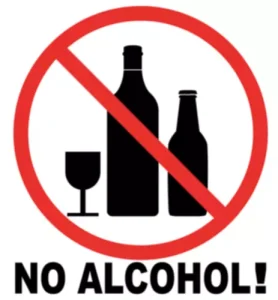|
1
07/2025
|

Alcoholic Ketoacidosis Endocrine and Metabolic Disorders MSD Manual Professional Edition
|
9
11/2022
|
Kategori : Sober living Komentar : 0 komentar Author : Admin LPPM |

First and foremost, medical professionals can provide immediate care to address the symptoms and heroin addiction stabilize the individual’s condition. This may involve intravenous fluids to address dehydration, as well as monitoring and managing electrolyte imbalances that can occur as a result of alcoholic ketoacidosis. According to the National Institute on Alcohol Abuse and Alcoholism, excessive alcohol consumption can lead to a range of health problems, including alcoholic ketoacidosis.
- One of the key mechanisms leading to AKA is the inhibition of gluconeogenesis.
- Recovering from an episode involves more than just correcting hyperglycemia and acidosis—it requires reflection upon what led up until that point so preventive measures can be put into place moving forward.
- The clinicians can also consult with the pharmacy regarding appropriate interventions and have them run a full medication reconciliation to check for drug interactions or agents that may contribute to EDKA.
- DKA is a potentially life-threatening complication of uncontrolled diabetes mellitus if not recognized and treated early.
- This may involve working closely with healthcare providers to manage any underlying health conditions, such as alcohol use disorder or other metabolic disorders, that could contribute to the development of AKA.
What is Socially Acceptable Addiction?
In severe cases, individuals may require intensive care and support to manage complications such as respiratory distress and organ failure. Once stabilized, individuals may also benefit from counseling and support to address underlying issues related to alcohol abuse. In patients presenting with anion gap metabolic acidosis, clinicians must consider a variety of possibilities early on. Infections, including pneumonia, genitourinary infection, and bacteremia, must be ruled out early in the diagnostic algorithm. In patients presenting with abdominal pain, consider intraabdominal infection and pancreatitis. Consider toxic alcohol (methanol, ethylene glycol) or paraldehyde ingestion, salicylate overdose, lactic acidosis, starvation ketosis, and pregnancy in the appropriate clinical setting.
- If you have diabetes and identify DKA early enough, you may be able to treat it from home with specific instructions from your healthcare provider.
- The risk of developing this condition is one of the reasons an alcohol use disorder is dangerous.
- Diabetes-related ketoacidosis is life-threatening and requires immediate treatment.
- People with this condition are usually admitted to the hospital, often to the intensive care unit (ICU).
Navigating Alcohol Use Disorder With Zinnia Health
- Understanding these underlying mechanisms can help healthcare professionals in the diagnosis and management of AKA in patients who abuse alcohol.
- Patients with mild hyperglycemia may have underlying diabetes mellitus, which may be recognized by elevated levels of glycosylated hemoglobin (HbA1C).
- This disorder is frequently seen in people with a history of persistent alcohol misuse and is characterized by symptoms such as abdominal discomfort, nausea, vomiting, and disturbed mental status.
- Monitoring ketone levels at home is essential for managing diabetes effectively.
- PPO insurance plans allow policyholders to see healthcare providers both inside and outside of their insurance network, usually without a referral.
- Common symptoms of alcoholic ketoacidosis include nausea, vomiting, abdominal pain, and dehydration.
Excessive alcohol consumption is the primary cause of alcoholic ketoacidosis. This can be accompanied by vomiting, which can further exacerbate the symptoms of the condition. The combination of nausea and vomiting can lead to dehydration, which can worsen the overall condition. Ketones, such as acetone, are chemicals the body generates when it doesn’t have enough glucose (sugar) to use as fuel. An excessive buildup of ketones can create a dangerously acidic internal environment. If untreated, this can escalate into metabolic acidosis, a life-threatening condition.

PTSD Awareness Day: Understanding Symptoms and Support

These factors contribute to a state where the body resorts to fat metabolism, resulting in excessive ketone production. Plasma glucose levels are usually low or normal, but mild hyperglycemia sometimes occurs. Alcoholic ketoacidosis (AKA) is a condition seen commonly in patients with alcohol use disorder or after a bout of heavy drinking. It is a clinical diagnosis with patients presenting with tachycardia, tachypnea, dehydration, agitation, and abdominal pain. This activity illustrates the evaluation and treatment of alcoholic ketoacidosis and explains the role of the interprofessional team in managing patients with this condition. Individuals with chronic alcohol abuse, poor nutrition, or those who engage in binge drinking are at higher risk for developing Alcohol-Induced Ketoacidosis.

Alcoholic Ketoacidosis: Signs, Symptoms, and Treatment
If you have diabetes and identify DKA early enough, you may be able to treat it from home with specific instructions from your healthcare provider. They’ll determine if you’ll be able to treat it from home or if you’ll need to go to the hospital. Melrose Recovery in Los Angeles offers compassionate, evidence-based care in a supportive setting. With PPO insurance coverage, treatment may be more affordable than you think.
- Lipid metabolism is subsequently boosted by the increasing NADH/NAD+ ratio.
- The diagnosis of AKA is primarily based on the history of alcohol consumption and clinical findings indicative of ketoacidosis without significant hyperglycemia.
- If history does not rule out toxic alcohol ingestion as a cause of the elevated anion gap, serum methanol and ethylene glycol levels should be measured.
- In severe cases, individuals may require intensive care and support to manage complications such as respiratory distress and organ failure.
- Both steps require the reduction of nicotinamide adenine dinucleotide (NAD+) to reduced nicotinamide adenine dinucleotide (NADH).
Is alcoholic ketoacidosis an emergency?
Neglecting treatment for alcoholic ketoacidosis might have profound implications. Without treatment, the condition can quickly worsen, resulting in life-threatening complications such as cardiac arrhythmias, dehydration, electrolyte imbalances, and even coma or death. Failure to address the underlying causes of alcoholic ketoacidosis, such as chronic alcohol addiction, can lead to recurring episodes and worsening of overall alcoholic ketoacidosis smell health. Alcohol-Induced Ketoacidosis (AIK) is a metabolic condition caused by excessive alcohol consumption, leading to a dangerous buildup of acids called ketones in the body. It often occurs in individuals who are malnourished or have not eaten properly, resulting in metabolic acidosis and electrolyte imbalances.
Berita Lainnya
|
1
07/2025
|
|
20
06/2025
|
|
20
06/2025
|
|
20
06/2025
|
|
20
06/2025
|
|
19
06/2025
|
|
2
07/2025
|
|
2
07/2025
|
|
2
07/2025
|
|
2
07/2025
|
|
2
07/2025
|
|
2
07/2025
|
Berita Terbaru
O‘zbekistonliklar uchun xavfsiz onlayn kazinolar.36
Wednesday, 2 Jul 2025
Graj Na Pieniądze Online Oficjalnie W Polsce
Wednesday, 2 Jul 2025
50 Energy Spinów Odbierz W Energycasino
Wednesday, 2 Jul 2025
Wejdź I Graj W Ulubione Gry!
Wednesday, 2 Jul 2025
Onwin Casino GİRİŞ Onwin-GÜNCEL GİRİŞ.4032
Wednesday, 2 Jul 2025
Agenda
Video Terbaru
Berita Terbaru
O‘zbekistonliklar uchun xavfsiz onlayn kazinolar.36
Wednesday, 2 Jul 2025
Graj Na Pieniądze Online Oficjalnie W Polsce
Wednesday, 2 Jul 2025
50 Energy Spinów Odbierz W Energycasino
Wednesday, 2 Jul 2025
Wejdź I Graj W Ulubione Gry!
Wednesday, 2 Jul 2025
Onwin Casino GİRİŞ Onwin-GÜNCEL GİRİŞ.4032
Wednesday, 2 Jul 2025
Agenda
Video Terbaru

Lembaga Penelitian dan Pengabdian Masyarakat Universitas HKBP Nomensen Medan